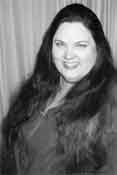 | Patsy Terrell is public relations and events coordinator of The Kansas Cosmosphere, located at 1100 N. Plum in Hutchinson. The Cosmosphere’s mission is to honor the past and inspire the future of space exploration. They provide information, education and entertainment with regard to science. You can contact Pasty by phone at 620-662-6305; by email at patsyt@cosmo.org or at The Kansas Cosmosphere, 1100 N. Plum, Hutchinson, KS 67501. |
Science
2011-01-01 10:18:00
Just how bad is it?
Answer: You’ve asked two really great questions. First, relative to other nations, the United States slipped further down the list in the latest results of the Program for International Student Assessment (PISA), arguably the most highly respected measure of comparative student achievement around the world.
Here are some essential points:
•The USA ranked 15 in Reading, ranking below Shanghai-China, Korea, Finland, Hong Kong-China Singapore, Canada, New Zealand, Japan, Australia, Netherlands, Belgium, Norway, Switzerland, and Estonia. The average USA reading score was 500 compared to Shanghai’s 556.
• In math, the USA ranked 31, but more significantly the USA’s score was 487 compared to Shanghai-China’s 600.
•In science, our students scored 502 compared to Shanghai-China’s 575, ranking us 22nd.
It’s important to remember that not all learning happens in the classroom. Parents can take an active part in making science and math a part of the every day discussion around the dinner table. We don’t walk around thinking about science and math in our everyday lives, but we’re affected by our knowledge of them all the time. That said, there are likely to be many discussions about the school system as a result of this research.
It seems the level of expectations Asian schools have for their students, and the classroom approaches used, are very predictive for student performance. For example, the emphasis in Shanghai is less on memorization and more on problem solving skills. The highest performing Asian schools also report they focus more on individual student performance as opposed to the model in some areas of the US where “minimum competency” and group averages are the norm.
Teacher training in most of these higher performing nations focuses more on subject matter content knowledge than on teaching methods. A number of studies have shown that, compared to the general population in their country, Asian teachers in the highest performing nations make relatively more money than do American teachers. But when you adjust for the difference in the amount of time Asian teachers are “on the job” compared to American teachers the difference more or less disappears because we have more days away from the classroom.
American schools are dealing with a very large number of students, from a variety of backgrounds. In some other countries, the education system has less to deal with from that cultural perspective.
Now, in regards to what can be done to get the students more excited about scoring higher…
There are math and science camps and road shows available that have proven to be one of the biggest “sparks” for youngsters across America. They are happening much more frequently than ever before. I recently read an article in the Danville, Ill Commercial-News about a “road show” that took place in their area. Some excerpts from their piece:
“Science Road Show,” which presented its first school-session program to Edison Elementary School fourth-graders last week, is designed to let students test-drive the scientific method through simple experiments.
“There’s such an emphasis on other things there’s not much time for science,” said Beth Chamberlain, a 24-year teacher at Danville High School. “They’re not getting enough and that makes me sad.”
She said many students don’t even know what they’re missing -- or how science affects their lives every day.
“It’s a lot of hands-on activities,” she said. “I want to show them how fun science is and that it happens right there in front of them.”
Edison Principal Mark Lindvahl said the Road Show was a valuable supplement, especially considering science gets short shrift due to increased instructional time devoted to reading and math.
Researchers have found there’s a “golden age” for interesting students in science and, fortunately, it’s a long window. Students who become interested at a younger age – even up through middle school – are more likely to go into science, math, technology and engineering fields. What sets off that spark can be any number of things.
In addition to classroom instruction, you can introduce your child to science and math through everyday activities like using fractions while cooking, or understanding the physics of using a lever while working on a home project. Inspire them to ask questions, and don’t feel like you have to have all the answers. There’s no shame in encouraging them to research the principles involved themselves and learning the science behind every day activities.
There are several institutions and exhibits in the Wichita-Hutchison area that offer a variety of learning programs in math and science, as well. Some summer programs are booking now, so look for day camps and other opportunities where the principles are explained and students are encouraged to apply their new-found knowledge to the everyday world.


